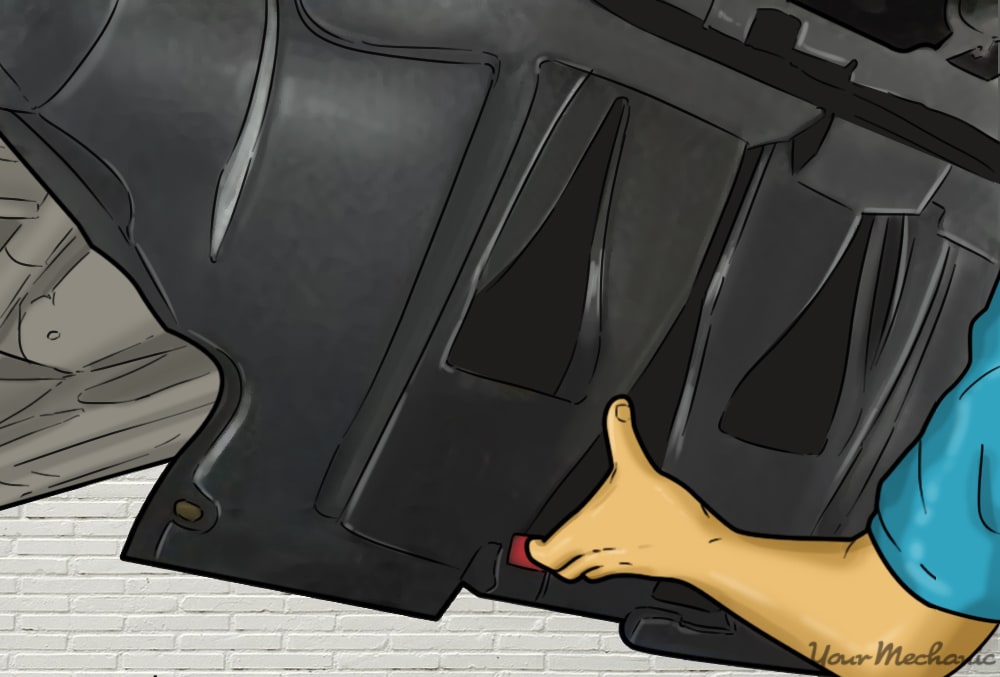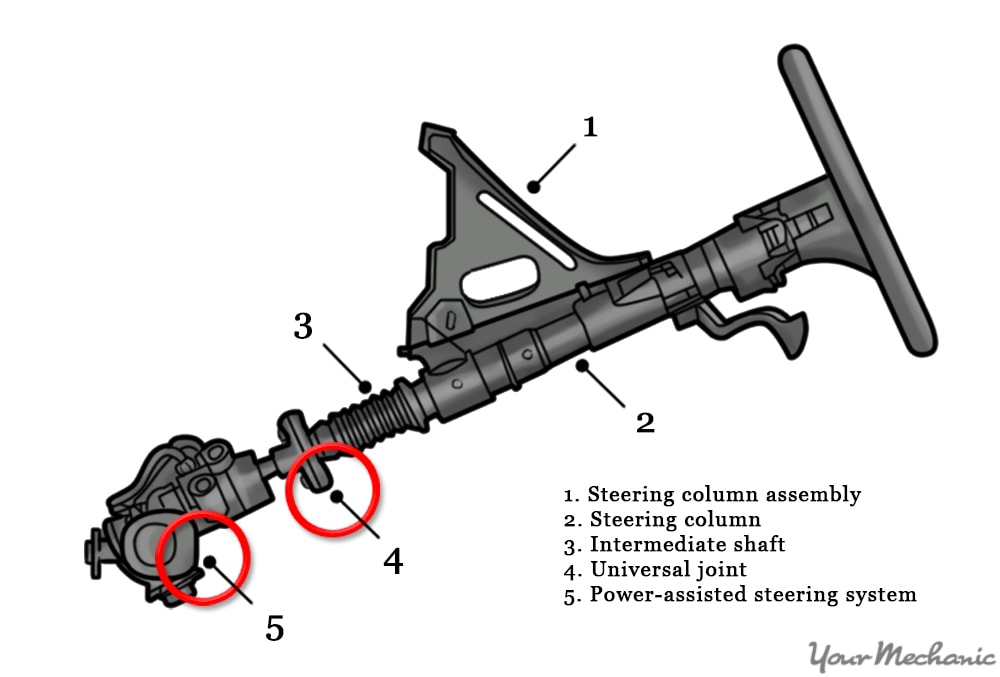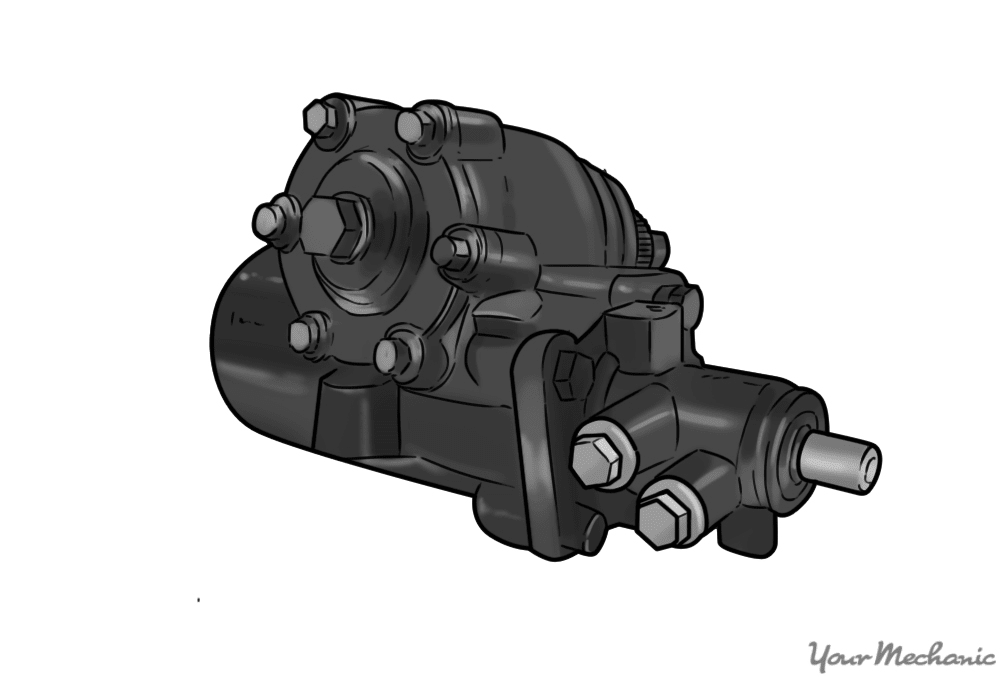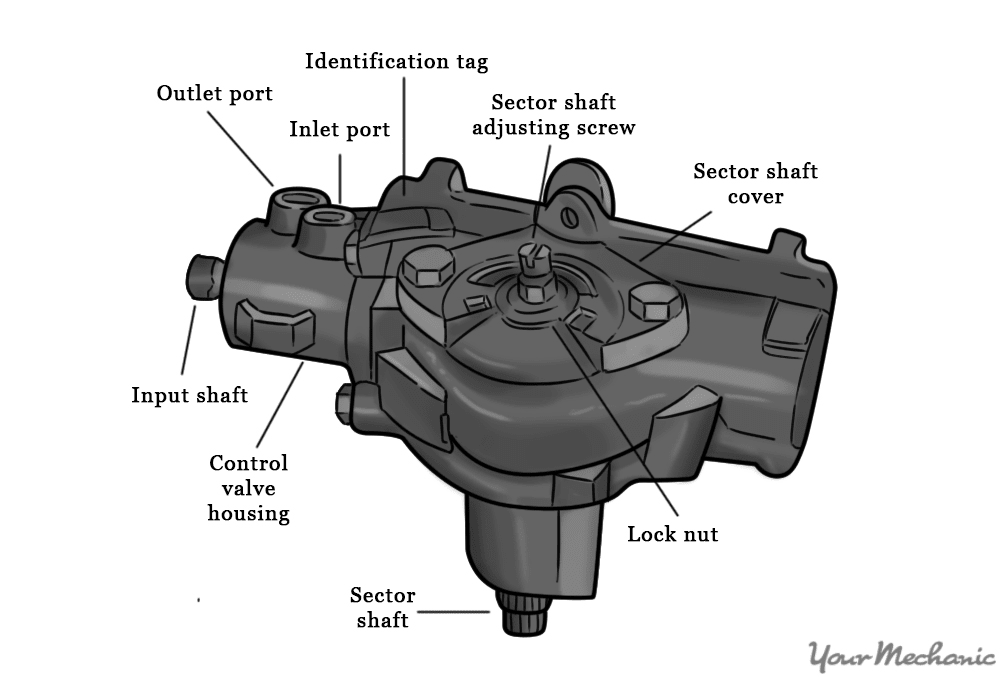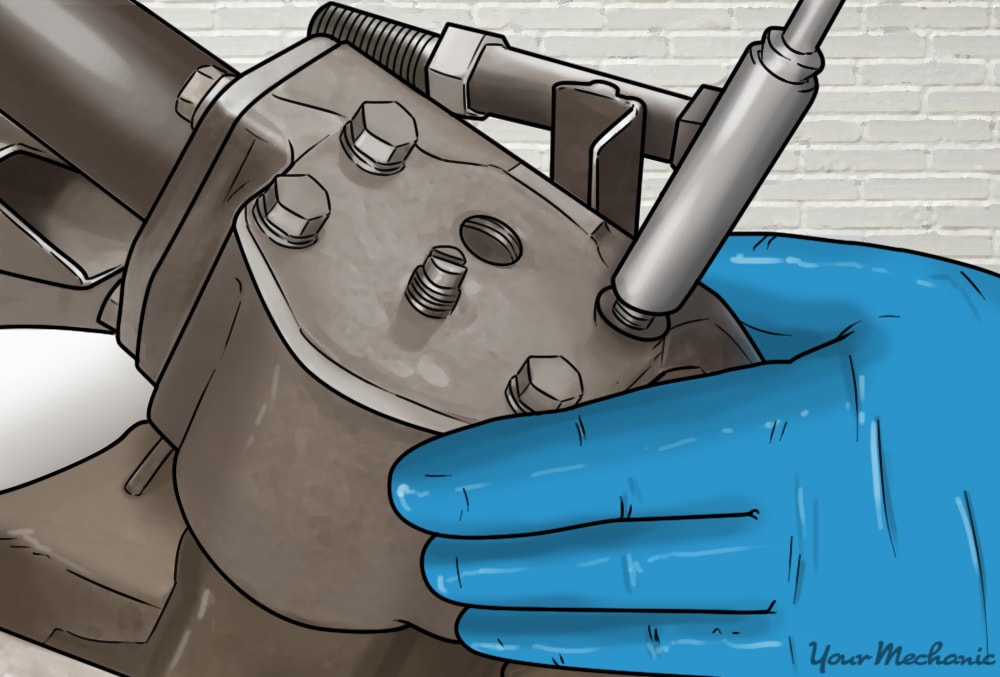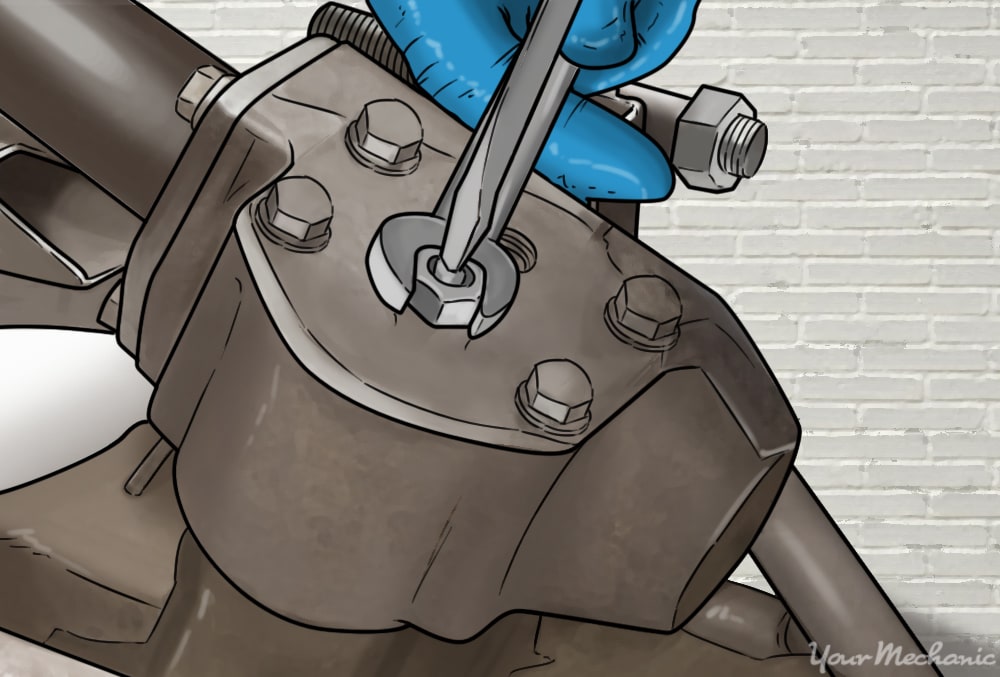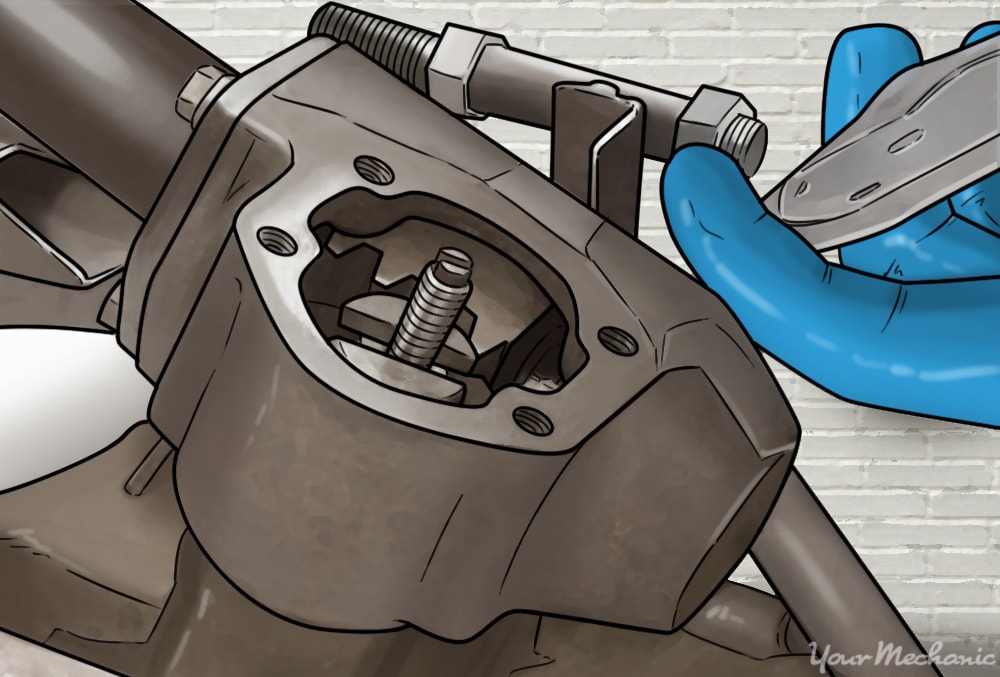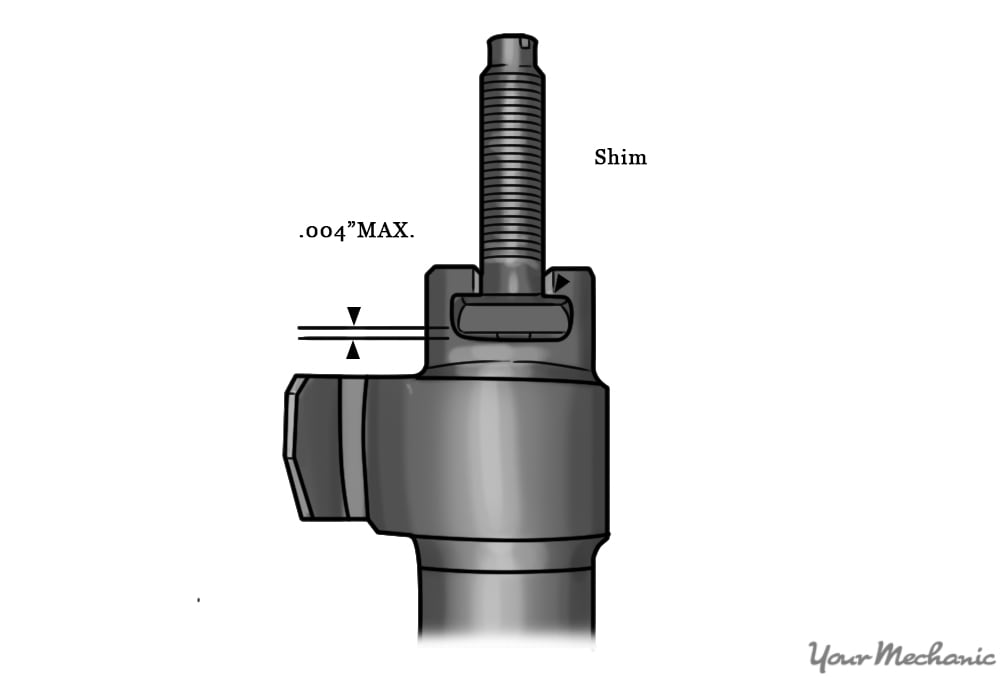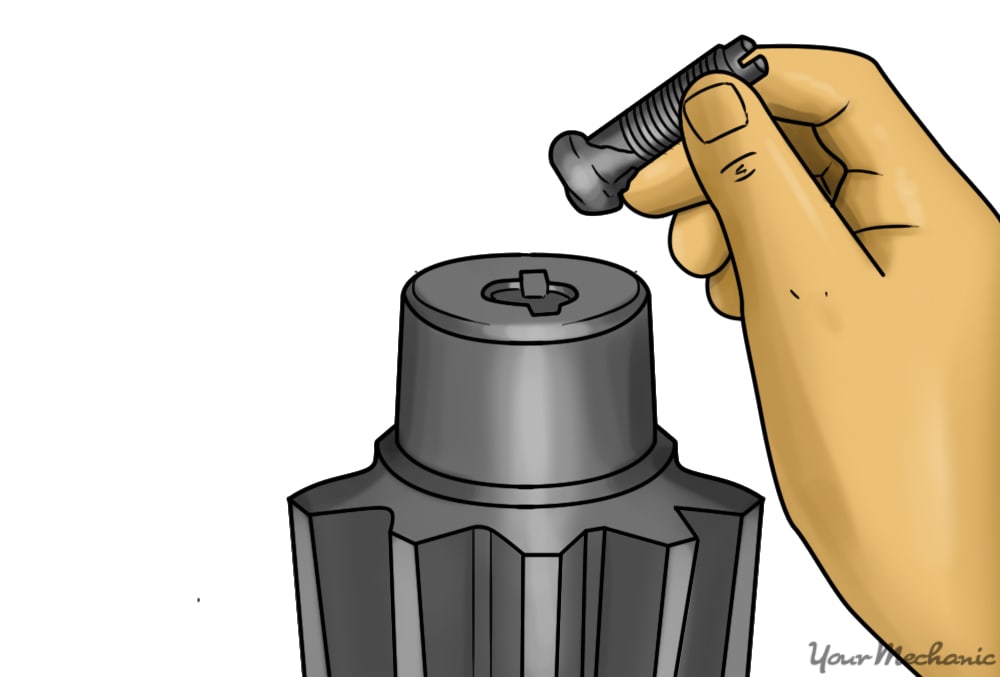

Maintaining control of the vehicle is extremely important to all drivers, especially during poor weather conditions. One of the biggest hurdles that drivers encounter is when the steering wheel develops a loose condition, caused by a gap that develops inside the steering box. This condition is often referred to as "steering wheel play" and can be adjusted on many vehicles by an experienced mechanic by tightening or loosening the steering gear adjuster plug. If the steering gear adjuster plug wears out, there will be a few common signs, including a loose steering wheel, the steering wheel springing back when turned, or a power steering fluid leak.
Part 1 of 1: Replacing the steering gear adjuster plug
Materials Needed
- Allen wrench or specialty screwdriver for adjustment screw insert
- Boxed end wrench or ratchet wrench
- Flashlight
- Jack and jack stands or hydraulic lift
- Liquid containment bucket
- Penetrating oil (WD-40 or PB Blaster)
- Regular sized flat blade screwdriver
- Replacement adjustment screw and shims (as recommended by manufacturer)
- Replacement sector shaft cover gaskets (on some models)
- Safety equipment (safety glasses and gloves)
Step 1: Disconnect the vehicle's battery. After the vehicle has been raised and supported on jack stands, the first thing that should be done before replacing this part is to disconnect the power supply.
Locate the vehicle's battery and disconnect the positive and negative battery cables before proceeding.
Step 2: Remove the belly pan from under the vehicle. To access the gearbox, remove the belly pan or lower engine covers/skid plates from your vehicle.
Refer to your service manual for exact instructions on completing this step.
You'll also need to remove any ancillary parts, hoses or lines that obstruct your access to the steering universal joint and gearbox. You need to remove the gearbox from the vehicle, so you'll also need to remove hydraulic lines and electrical sensors attached to this component.
Step 3: Remove the steering column from the gearbox. Once you have access to the steering box and have removed all hardware connections from the steering box, you'll need to disconnect the steering column from the gearbox.
Typically this is completed by removing the bolts that secure the universal joint to the power steering box (gearbox).
Please refer to your vehicle service manual for exact steps on how to correctly remove the steering column from the gearbox, so you can remove the gearbox easily in the next step.
Step 4: Remove the power steering gearbox from the vehicle. On most vehicles, the power steering gearbox will be attached with four bolts onto support brackets on the upper control arm or the chassis.
Refer to your vehicle's service manual for exact steps on how to remove the power steering gearbox.
Once the gearbox has been removed, place it on a clean work bench and spray it with a high-quality degreaser to remove all excess debris on the unit.
Step 5: Locate the sector shaft cover and spray the bolts with penetrating fluid. The image above shows the basic setup of the sector shaft cover, the adjustment screw and the locking nut that needs to be replaced.
Once you've cleaned the gearbox and have sprayed the cover bolts with penetrating oil, let it soak in for about 5 minutes before you attempt to remove the cover.
Step 6: Remove the sector shaft cover. There are usually four bolts that need to be removed in order to gain access to the sector shaft screw.
Remove the four bolts using a socket and ratchet, an end wrench, or an impact wrench.
Step 7: Loosen the center adjustment screw. The center adjustment screw needs to be loosened in order to remove the cover.
Using either an Allen wrench or a flat screwdriver (depending on the insert of the adjustment screw) and an end wrench, hold the center adjustment screw tight while you unscrew the nut with the wrench.
Once the nut and the four bolts are removed, you can take the cover off.
Step 8: Remove the old adjustment plug. The sector shaft adjustment plug will be attached to a slot found inside the chamber.
To remove the old adjustment plug, simply slide the plug to the left or right, through the slot. It will come out rather easily.
Step 8: Install the new adjustment plug. The image above shows how the adjustment plug is inserted inside the slot of the sector shaft. The new plug will have a shim or washer that needs to be installed first.
This shim is uniquely measured for your vehicle model. Make sure to install the shim FIRST, then insert the new plug in between the slot on the sector shaft.
Step 9: Install the sector shaft cover. Once the new plug has been installed, place the cover back on the gearbox and install the cover with the four bolts that hold the cover on.
In some vehicles, there is a gasket that needs to be installed. As always, check your vehicle service manual for exact instructions for this process.
Step 10: Install the center nut onto the adjustment plug. Once the four bolts have been secured and tightened to the manufacturer’s specs, install the center nut onto the adjustment plug.
This is best accomplished by placing the nut on the bolt, holding the center adjustment plug secure with the Allen wrench/screwdriver, then hand tightening the nut until it is flush with the cover.
- Note: Once the adjustment screw and nut are together, refer to your vehicle service manual for proper adjustment guidelines. In many cases, the manufacturer will recommend measuring the adjustment before placing the cap on, so make sure to check your service manual for exact tolerance and adjustment tips.
Step 11: Reinstall the gearbox. Once the proper adjustment has been made to the new steering gearbox adjustment plug, you'll need to reinstall the gearbox, attach all hoses and electrical fittings and secure it back to the steering column.
Step 12: Replace the engine covers and skid plates. Reinstall any engine covers or skid plates that you had to remove to gain access the the steering column or gearbox.
Step 13: Reconnect the battery cables. Reconnect the positive and negative terminals to the battery.
Step 14: Refill the power steering fluid. Refill the power steering fluid reservoir. Start the engine, recheck the power steering fluid and refill as instructed by the service manual.
Step 15: Test the vehicle. Start the car while the vehicle is still in the air. Check underneath for any power steering fluid leaking from hydraulic lines or connections.
Turn the wheels to the left or right a few times to test the power steering function. Shut off the vehicle, check the power steering fluid and add as needed.
Continue with this process until the power steering works as it should and the power steering fluid does not need to be refilled. It should only take you about two times to complete this test.
Replacing the steering gear adjuster plug is a lot of work. The adjustment of the new plug is very detailed and can cause inexperienced mechanics a lot of headaches. If you've read these instructions and don't feel 100% confident completing this repair, please contact one of the local ASE certified mechanics at YourMechanic to complete the steering gear adjuster plug replacement job for you.



